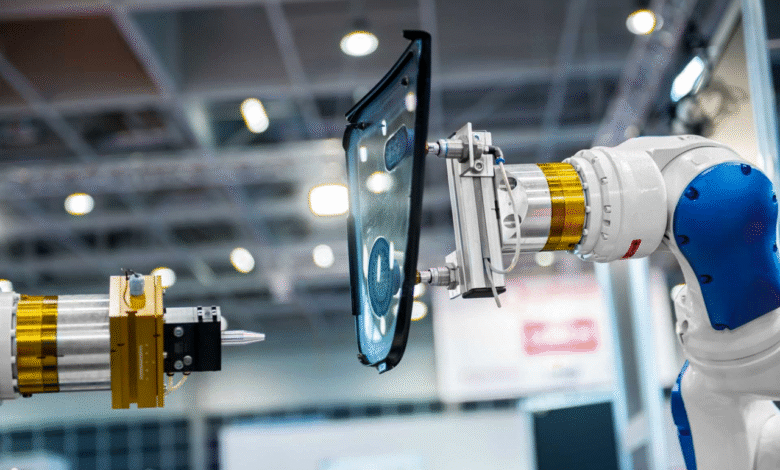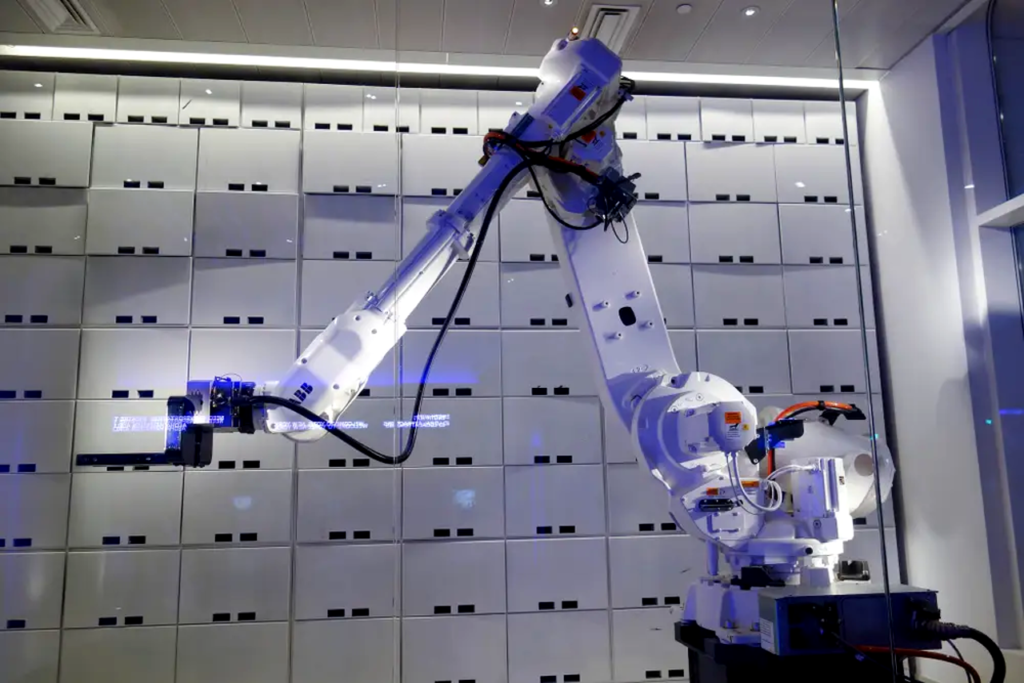
The United Kingdom has a rich history of industrial innovation, and this tradition continues with the rapid adoption of automation and robotics. Over the past decade, there has been a noticeable surge in the use of advanced technologies to automate tasks and processes across various industries. The driving forces behind this surge are a combination of technological advancements and the growing need for UK businesses to stay competitive in the global market.
Read More: The UK Digital Infrastructure: Challenges and Opportunities
How UK Businesses are Embracing Automation and Robotics
In the UK, businesses are recognizing that automation can revolutionize their operations. It offers a pathway to enhance efficiency, cut costs, and reduce human errors. This is achieved by the integration of machines, robotics, and artificial intelligence into everyday tasks.
Benefits of Automation and Robotics

Increased Efficiency
One of the primary advantages of automation is the significant boost in efficiency. Machines and robots can work around the clock without the need for breaks or rest. This means that tasks can be completed much faster and more consistently than if performed by humans.
In the manufacturing sector, for example, robots on the assembly line can tirelessly assemble products, resulting in a higher production rate. Similarly, in agriculture, automated systems can continuously monitor and care for crops, increasing productivity.
Cost Savings
Though the initial investment in automation technology can be substantial, the long-term cost savings are noteworthy. Reduced labor costs, increased production, and a reduction in errors contribute to a healthier bottom line for businesses. Over time, these cost savings can significantly outweigh the initial capital expenditure.
Improved Accuracy
Human errors can be costly, particularly in industries where precision is crucial. Automation technology can eliminate these errors by executing tasks with pinpoint accuracy. In healthcare, for instance, robots can perform surgeries with unmatched precision, reducing recovery times and improving patient outcomes.
Industries Embracing Automation
Automation’s footprint extends across various sectors, and different industries are reaping the benefits in their own unique ways.
Manufacturing
The manufacturing sector has been at the forefront of embracing automation. Robots and machines are widely used for tasks such as assembly, welding, and painting. These machines work alongside human operators, boosting production rates and ensuring consistent quality.
Healthcare
Automation in healthcare is saving lives. Surgical robots offer surgeons unprecedented precision during complex procedures, leading to shorter recovery times and improved patient outcomes. Automated diagnostic systems can rapidly analyze medical data, making diagnoses faster and more accurate.
Retail
In the retail industry, automation is enhancing the customer experience. Self-checkout systems are becoming common, reducing wait times for shoppers. Advanced inventory management systems powered by artificial intelligence can optimize stock levels, ensuring products are available when customers want them.
Agriculture
Agriculture is no stranger to automation. Autonomous tractors, drones, and other technologies are used for planting, harvesting, and monitoring crop health. This not only increases efficiency but also helps manage resources more effectively.
Finance
Banks and financial institutions are increasingly relying on automation to process transactions, detect fraudulent activities, and provide customer support. This not only streamlines financial processes but also enhances security.
Challenges and Concerns
While the advantages of automation are clear, it’s essential to address the challenges and concerns associated with its adoption.
Job Displacement
One of the most pressing concerns is the potential loss of jobs. As automation takes over routine and repetitive tasks, there is a risk of unemployment for some workers. This challenge underscores the importance of retraining and reskilling the workforce for more complex and technical roles.
Initial Implementation Costs
The initial investment in automation technology can be substantial, and not all businesses can afford it. Smaller companies may find it challenging to allocate the necessary resources for automation. However, it’s important to note that the long-term benefits often outweigh the initial costs.
Technical Challenges
Integrating automation technology can be technically challenging. Companies need skilled technicians and engineers to ensure a smooth transition. Furthermore, as technology evolves, businesses must continuously adapt and update their systems.
Case Studies
Real-world examples of successful automation implementations demonstrate the tangible benefits of this technology.
A Manufacturing Company’s Success Story
Company X, a leading UK manufacturer, implemented robotics on its assembly line. This move led to a 30% increase in production output and a 25% reduction in errors. The company’s ability to meet growing demand and maintain product quality improved significantly.
Automation in Healthcare
Hospital Y, a prominent healthcare institution, integrates robotic surgery systems. This investment resulted in shorter patient recovery times, decreased complications, and more precise surgeries, ultimately saving lives.
Future Trends

The future of automation in the UK is filled with exciting possibilities and trends.
AI and Machine Learning
The integration of artificial intelligence and machine learning will be pivotal. These technologies will enhance automation’s decision-making capabilities, allowing machines to adapt and learn from experience.
Collaborative Robots
Collaborative robots, often referred to as cobots, will become more prevalent. These machines can work safely alongside humans, contributing to efficiency and reducing the risk of job displacement.
Sustainable Automation
Sustainability is a growing concern, and businesses are increasingly focusing on sustainable automation. This involves reducing environmental impact and resource consumption. Companies are exploring ways to make automation more energy-efficient and eco-friendly.
Conclusion
The adoption of automation and robotics in UK businesses is not merely a trend; it is a necessity for businesses aiming to thrive in the modern world. While challenges such as job displacement and initial costs exist, the benefits far outweigh the drawbacks. The future promises exciting advancements in AI and machine learning, the integration of collaborative robots, and the development of sustainable automation practices. These advancements will make the UK business landscape more efficient, competitive, and environmentally conscious.
Read More: The Role of Cybersecurity in UK Businesses
FAQs
- How does automation affect employment in the UK? Automation can lead to job displacement in some industries, but it also creates new job opportunities in robotics and automation technology.
- What are the main challenges companies face when implementing automation? The main challenges include the initial implementation costs, technical difficulties, and concerns about job displacement.
- Are there any notable success stories of businesses embracing automation in the UK? Yes, Company X, a leading manufacturer, saw significant improvements in production and error reduction after implementing automation.
- How is automation impacting the healthcare sector in the UK? Automation in healthcare is leading to more precise diagnostics, robotic surgeries, and improved patient care.
- What can we expect in the future of automation in the UK? The future will likely bring advancements in AI, more collaborative robots, and a focus on sustainable automation practices.








2 Comments